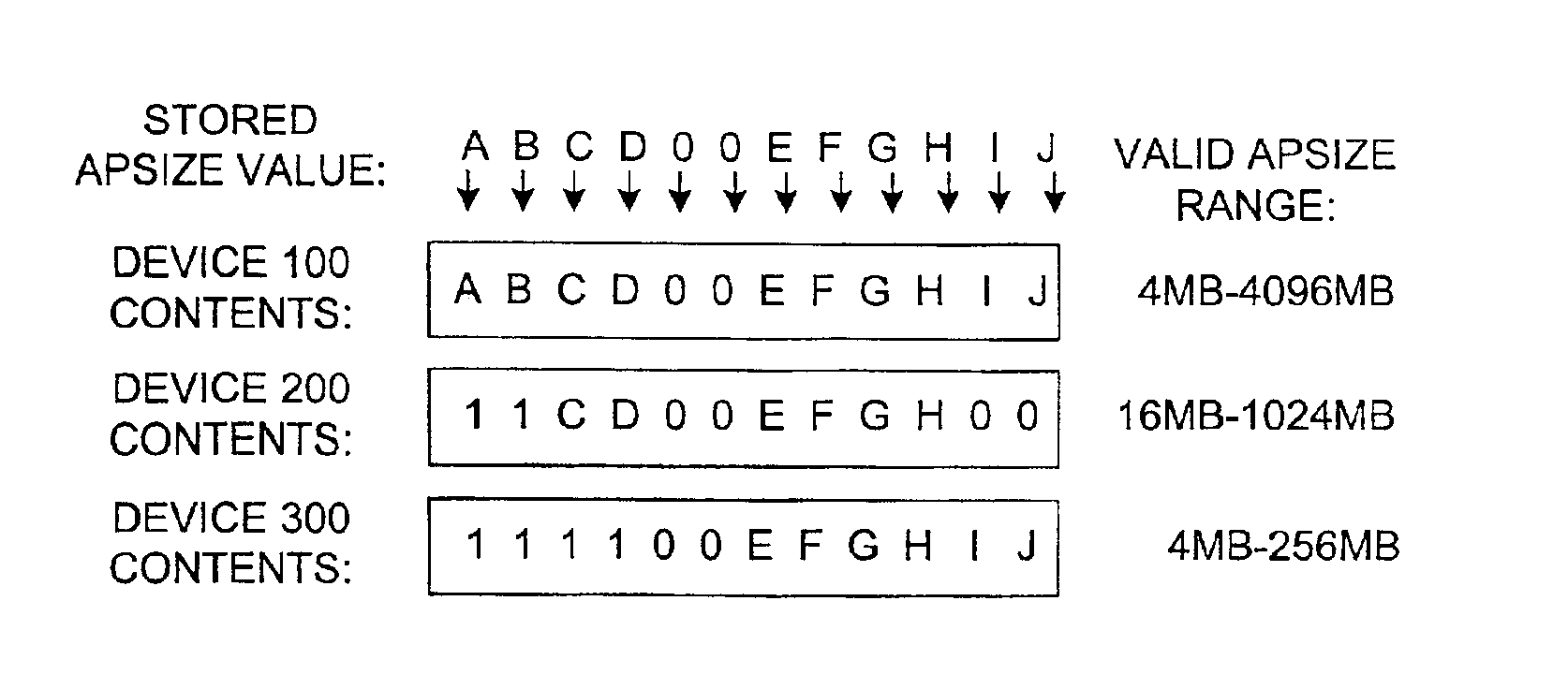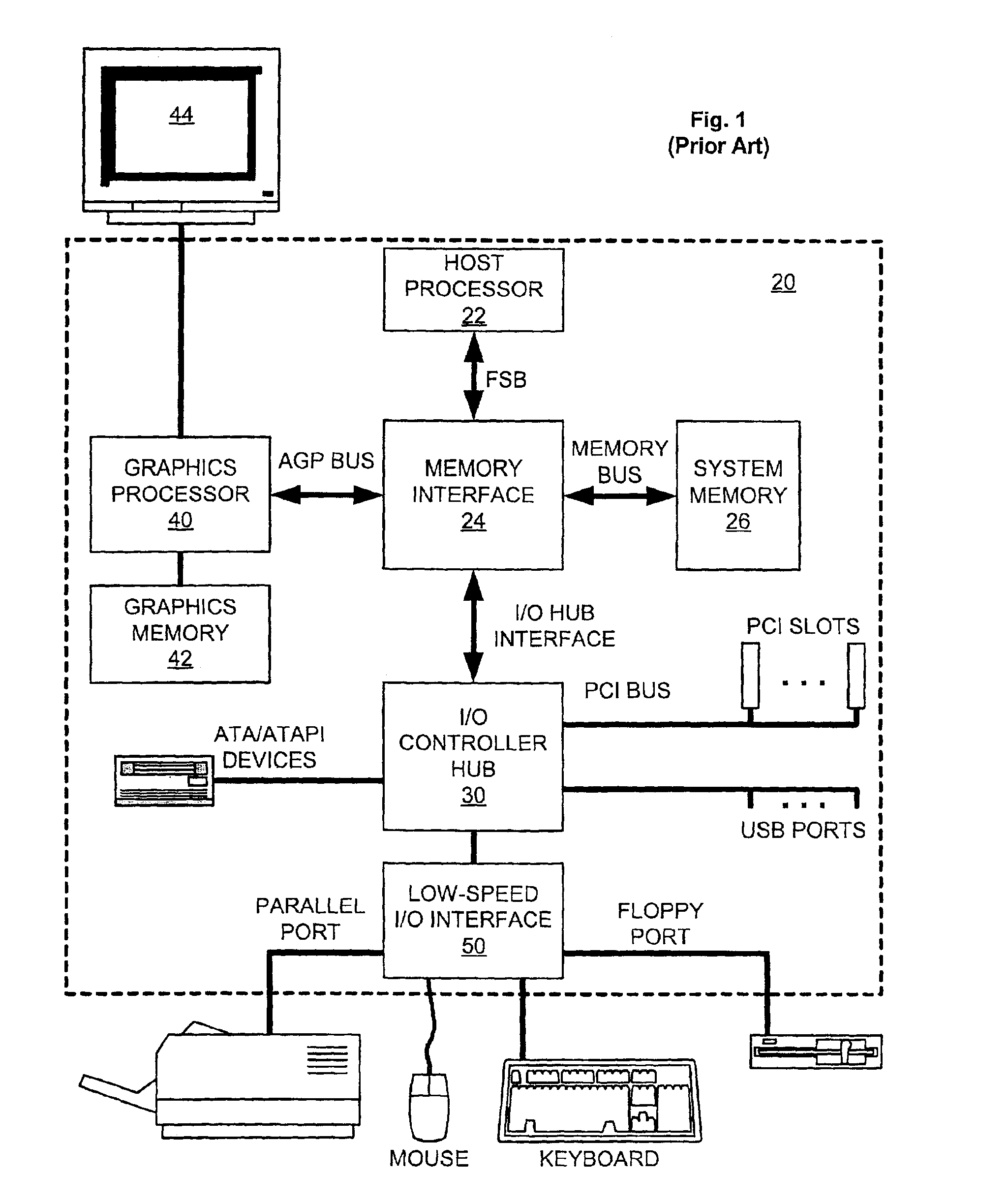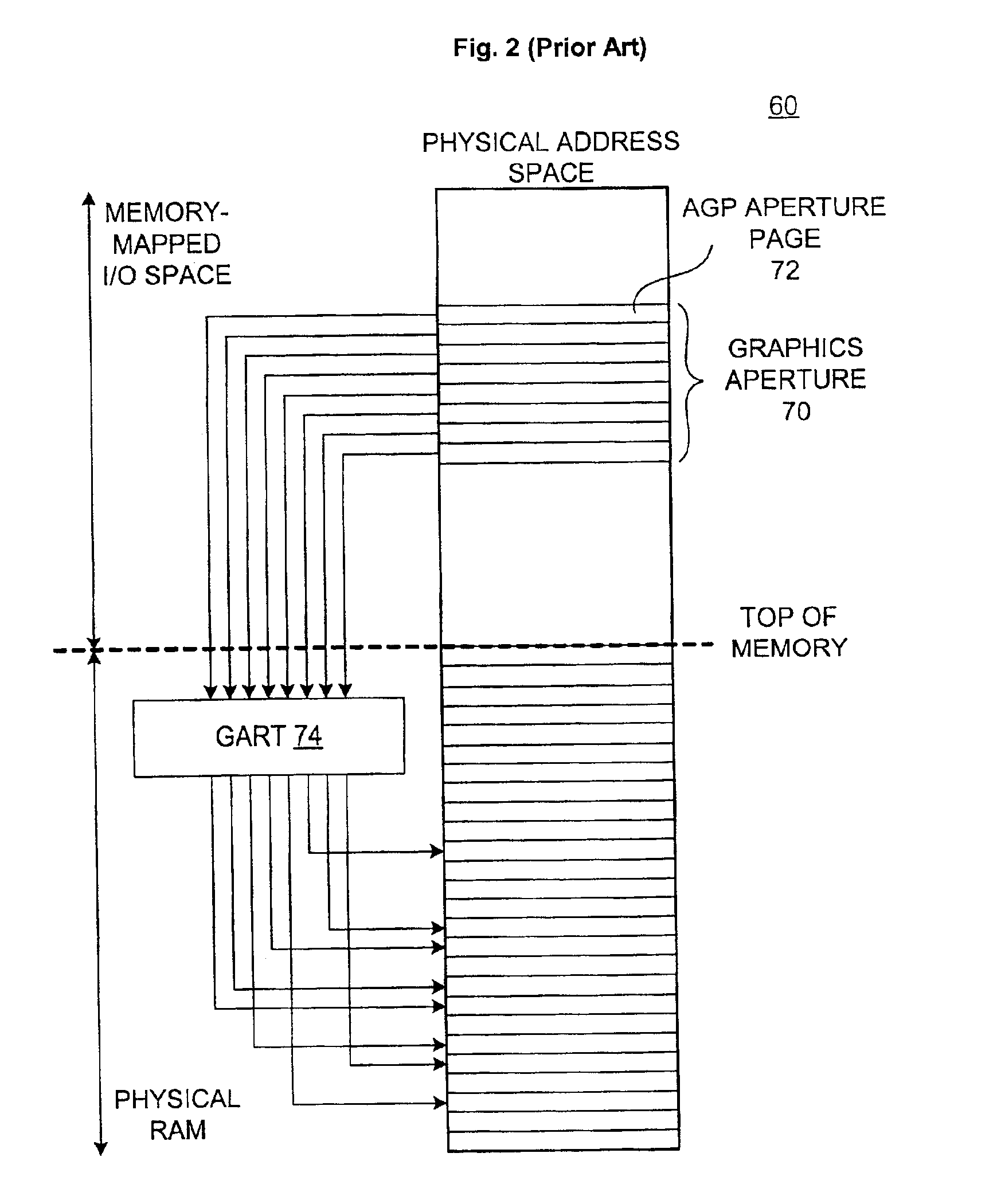Dynamic computation of chipset-supported accelerated graphics port aperture sizes
a graphics port and aperture size technology, applied in computing, memory adressing/allocation/relocation, instruments, etc., can solve the problems of large contiguous memory block, computer operating system, and graphic processor 40/b> may require dramatically more memory capacity to create high-quality graphics
- Summary
- Abstract
- Description
- Claims
- Application Information
AI Technical Summary
Benefits of technology
Problems solved by technology
Method used
Image
Examples
Embodiment Construction
[0020]The range of graphics aperture sizes supported by a memory interface is needed by the operating system, which selects and then uses a graphics aperture. The GART driver is responsible for reading the currently selected aperture size from the memory interface's APSIZE register, and then populating the GART with pointers into allocated sections of system memory, according to that size. Presently, each different memory interface device type has its own unique GART driver, with hardcoded values indicating the APSIZE register bit patterns supported by the memory interface, and the number of such patterns. Each time a different memory interface is released, then, a new GART driver must be created, compiled, and distributed with the operating system. This driver has the hardcoded APSIZE register bit patterns for that memory interface. Use of an incorrect driver with this prior art approach is possible, and could have harmful effects upon a system. Even if in most cases, through caref...
PUM
 Login to View More
Login to View More Abstract
Description
Claims
Application Information
 Login to View More
Login to View More - R&D
- Intellectual Property
- Life Sciences
- Materials
- Tech Scout
- Unparalleled Data Quality
- Higher Quality Content
- 60% Fewer Hallucinations
Browse by: Latest US Patents, China's latest patents, Technical Efficacy Thesaurus, Application Domain, Technology Topic, Popular Technical Reports.
© 2025 PatSnap. All rights reserved.Legal|Privacy policy|Modern Slavery Act Transparency Statement|Sitemap|About US| Contact US: help@patsnap.com



